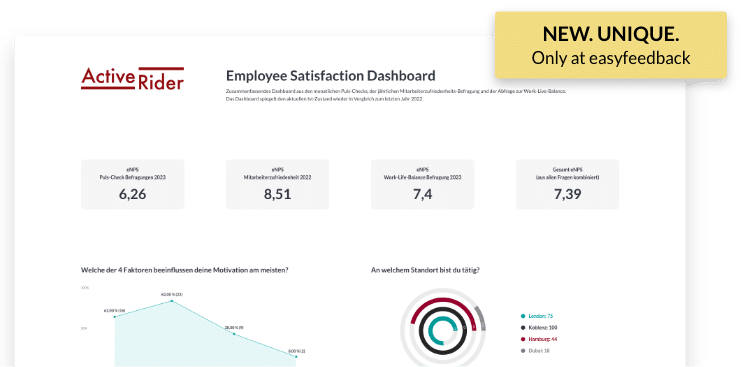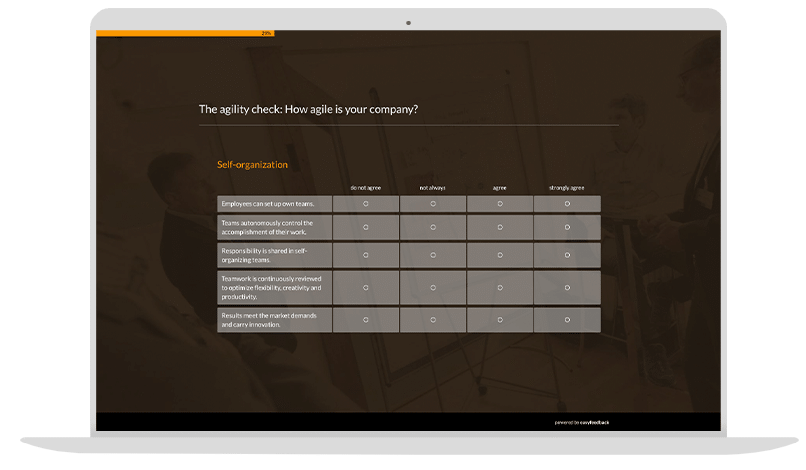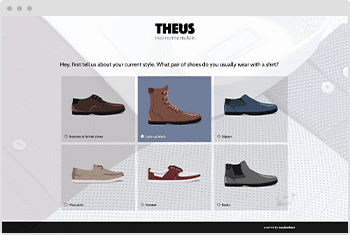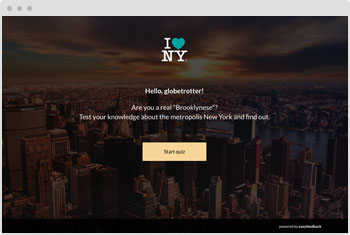Test your company for flexibility and adaptability with an agility check

With our ready-to-use quiz template, you can find out how flexibly your company can react to changing market conditions and challenges.

“Identifying customer needs is an essential part of our business. easyfeedback accompanies us for many years as a loyal partner in this task. We particularly appreciate the intuitive usability of the survey tool as well as the professional support.”
Guild Lead User Experience Research
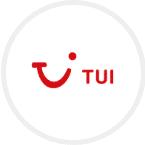
“We use easyfeedback for internal and external surveys – fast, comfortable and really easy! Straightforward and cordial support can always create a smile. We really appreciate the permanent development of the platform.”
Guest & Competitor Insights Analyst
Content and targets of this agility check template
In times of increasing digitalization and dynamically changing market conditions, companies are constantly confronted with new challenges . The new circumstances require companies today to act quickly and be highly adaptable throughout the organization in order to keep up with the competition.
An agility check in the form of an online quiz helps you to reflect and understand whether and how agile your company has been up to now. Discover potential for improvement in terms of leadership and organizational development, transparency in internal corporate communications, previous working methods and in many other areas.
Become aware of the impact a more agile company will have on your competitiveness.
Content:
• Query on self-organisation
• Query on corporate governance
• Assessment of internal transparency
• Perception about corporate culture
• Survey on mindfulness
• Self-assesment of business agility
Targets:
• Self-reflection and dialogue
• Uncover potential for improvement
• Improve agility and flexibility
• Gain competitive advantages

Data privacy protection „made in Germany“ (GDPR)

Anonymity functions for open feedback
Almost everything you need to know about agility?
1. What is agility?
If we describe someone as agile, this person is mentally and physically agile. The term is usually used, for example, for older people who are still fit into old age.
But not only people can be described as agile, agility is also becoming an increasingly important topic in companies. Agility describes the flexible and proactive response to unforeseen events and new requirements.
The term goes back to the sociologist Talcott Parsons, who in the 1950s identified four capabilities that every system must fulfill in order to exist in the long term. According to Parson, a company must adapt to external conditions (Adaptation), formulate goals and pursue them (Goal Attainment), establish social cohesion (Integration) and maintain basic structures and value patterns (Latency). The AGIL paradigm by Talcott Parsons is derived from the four initial letters of the above functions.
2. What is the difference between agility and flexibility?
The terms agility and flexibility are often used synonymously in common parlance. What both terms have in common is that they are about adapting and reacting to new situations.
However, the term agility is a bit broader here. Some define agility as an organization that is flexible and also proactive and takes initiative to implement change. Reacting flexibly can also mean returning to the original state after an adjustment when the situation changes again.
Agility, on the other hand, integrates the positive aspects of the changed situation and thus combines the old and the new, resulting in a new state and thus in further development
3. What are the characteristics of an agile company?
There is no question that agility is desirable. But what do companies need to be considered agile? We have compiled a few characteristics below to give you a little insight into the topic:
1. Self-Organization
In an agile company, employees organize their work in the team themselves. The work tasks are divided among the team members and everyone is responsible for their own area. The employees can both put together their teams themselves and decide how the work tasks are to be carried out. Through regular reflection, the teamwork is continuously improved.
2. Leadership
The classic top-down authoritarian leadership style is not applied in agile companies. Flat hierarchies prevail here, in which everyone is a decision-maker and bears responsibility. Managers are more supportive instead of delegating. Mutual feedback between superiors and employees is explicitly desired.
3. Transparency
In agile companies, transparency is an important feature. Thus, all decisions and developments are openly communicated within the company. As a result, tasks, responsibilities and goals are always known to everyone and employees feel more involved in the company’s fate and design.
4. Corporate culture
Due to the open exchange, there is a high level of trust among employees and also between employees and managers. Communication within the company is appreciative and transparent. Agile companies are also open to new ideas and willing to rethink established values. For example, employees are encouraged to experiment in order to learn from their mistakes.
5. Mindfulness
You probably know mindfulness more from meditation classes. But the topic is also becoming more and more popular in companies. Among other things, mindfulness helps to solve problems and conflicts in teamwork and is sustainably integrated into everyday work in agile companies. In meetings, attention is paid to respectful and effective communication and employees and managers are thus given the opportunity for an exchange at eye level.
4. What is the advantage of an agile company? Why is agile working important?
In addition to the ability to react flexibly to changing market conditions and customer requirements, an agile way of working brings the company several other advantages:
Among other things, the greater involvement of customers in the product development process means that agile companies can respond much better to changing needs and requirements. This leads to greater conformity to expectations.
But employees also benefit from agile working: Greater employee participation in corporate decisions or in shaping the corporate culture leads to improved collaboration and higher motivation.
Flat hierarchies and regular meetings in which everyone can get involved also give employees more information about existing work processes. As a result, the workforce is always up to date and more involved, which contributes to higher employee satisfaction and a stronger sense of “we”.
Another advantage is that problems and suggestions for improvement that initially come to the attention of the implementing employees can be discussed promptly and the goals jointly adjusted. This regular feedback makes it possible to respond quickly and flexibly to changing market conditions or problems in the production process, for example.
5. Why should I/my company perform the agility check from easyfeedback?
The agility check gives you a good overview of how agile and adaptable your company reacts to changing market conditions and challenges. Through self-reflection, you quickly determine what is already going well and in which areas you still need to optimize in order to become even more agile. In this way, discover potential for improvement in terms of leadership, organizational development, transparency, working methods and much more.
Our agility check questionnaire is designed as a quiz template. The online quiz can be answered quickly and easily and gives you feedback on your current status afterwards. Of course, you also have the possibility to adapt the template to your needs or to design a completely new survey. Why not give it a try?
You are in professional company







easyfeedback welcomes more than 740.000 participants per month!
